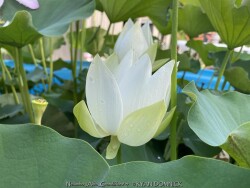

Alba Grandiflora Water Lotus, is also known as Nelumbo 'Alba Grandiflora'
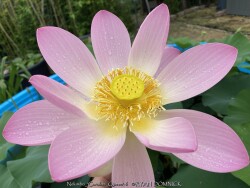

Carolina Queen Pink Water Lotus, is also known as Nelumbo 'Carolina Queen'
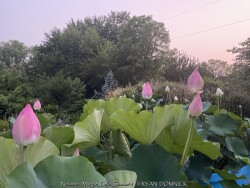

Maggie Belle Slocum Pink Water Lotus, is also known as Nelumbo 'Maggie Belle Slocum'
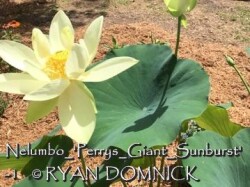

Perrys Giant Sunburst Light Yellow Water Lotus, is also known as Nelumbo 'Perrys Giant Sunburst'
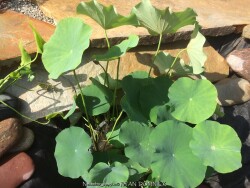

American Native Water Lotus, is also known as Nelumbo lutea
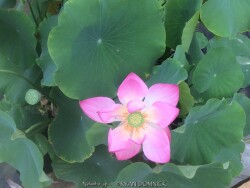

Water Lotus Cultivars (mixed), is also known as Nelumbo sp.
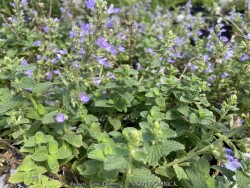

Nepeta (Catmint) Is one of the most adaptable, permanent perennials available in our climate and in your landscape! Definitely a "once it's their plant if there forever". Originally native to the Caucasus, Iran, Iraq, Turkey, there are numerous cultivars now with improved flowering and growth habit. Generally, the mint green foliage is fine textured and compact. Spring emergence in Kansas zone 6a is very early (usually in March) and will tolerate late freezes. This creates very early season interest in the garden while other plants are still dormant. Usually within a month of emerging, lavender-blue flowers cover the plant for up to six weeks. Pollinators enjoy the feast especially when catmint is used as a mass planting groundcover. Following spring flowering, many varieties develop attractive foliage and continual sporadic flowering. Some varieties have another big flower show in the fall especially if they are trimmed back and deadheaded once in late summer. Foliage is persistent and remains attractive late into the fall down to about 20° F providing late-season interest. Winter dried foliage is a somewhat attractive light gray and will eventually need to be cut or mowed to the ground before new growth emerges in the spring. Catmint is tolerant of almost any kind of soil including clay but will not tolerate poorly drained soil. Frequent watering is OK in normal garden soils but there is a risk of excessive growth and flopping. Catmint looks best in full sun but will still flower and look decent with part shade or 1/2 day full sun. This makes it adaptable to any side of the house even called northside if it gets full sun by mid-summer when the sun angle gets high. Cold hardiness or heat stress is not a problem at all in zone 6. Combine with just about any other perennial or shrub with a different flower and leaf color. It's hard to imagine a perennial or pollinator garden in Kansas without Catmint! Contrary to popular belief, cats do not destroy or eat this plant but may be attracted to it and create a nest beside it. They are really after catnip, a closely related plant. Nepeta 'Cat's Pajamas' is a long blooming perennial that's perfect in small areas of the landscape. Indigo blue flowers are produced all the way from the soil to the tips, providing an intense splash of color when it's in bloom. Rosy purple calyxes extend the color when the blooms are past peak. All Proven Winners® plants are legally propagated, healthy and vigorous, true to name, and tagged with color pictures and growing information.
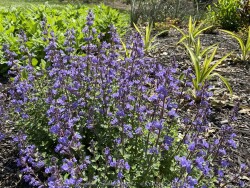

Nepeta (Catmint) Is one of the most adaptable, permanent perennials available in our climate and in your landscape! Definitely a "once it's their plant if there forever". Originally native to the Caucasus, Iran, Iraq, Turkey, there are numerous cultivars now with improved flowering and growth habit. Generally, the mint green foliage is fine textured and compact. Spring emergence in Kansas zone 6a is very early (usually in March) and will tolerate late freezes. This creates very early season interest in the garden while other plants are still dormant. Usually within a month of emerging, lavender-blue flowers cover the plant for up to six weeks. Pollinators enjoy the feast especially when catmint is used as a mass planting groundcover. Following spring flowering, many varieties develop attractive foliage and continual sporadic flowering. Some varieties have another big flower show in the fall especially if they are trimmed back and deadheaded once in late summer. Foliage is persistent and remains attractive late into the fall down to about 20° F providing late-season interest. Winter dried foliage is a somewhat attractive light gray and will eventually need to be cut or mowed to the ground before new growth emerges in the spring. Catmint is tolerant of almost any kind of soil including clay but will not tolerate poorly drained soil. Frequent watering is OK in normal garden soils but there is a risk of excessive growth and flopping. Catmint looks best in full sun but will still flower and look decent with part shade or 1/2 day full sun. This makes it adaptable to any side of the house even called northside if it gets full sun by mid-summer when the sun angle gets high. Cold hardiness or heat stress is not a problem at all in zone 6. Combine with just about any other perennial or shrub with a different flower and leaf color. It's hard to imagine a perennial or pollinator garden in Kansas without Catmint! Contrary to popular belief, cats do not destroy or eat this plant but may be attracted to it and create a nest beside it. They are really after catnip, a closely related plant. Nepeta grandiflora 'Summer Magic' is a free-blooming catmint that lives up to its namesake€â€it is summer magic! It blooms all season long on upright stems that never flop, even in the worst of storms. It stays fresh looking even in the heat and humidity of summer as other nepeta varieties tend to fade.
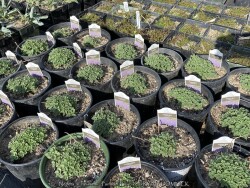

Nepeta (Catmint) Is one of the most adaptable, permanent perennials available in our climate and in your landscape! Definitely a "once it's their plant if there forever". Originally native to the Caucasus, Iran, Iraq, Turkey, there are numerous cultivars now with improved flowering and growth habit. Generally, the mint green foliage is fine textured and compact. Spring emergence in Kansas zone 6a is very early (usually in March) and will tolerate late freezes. This creates very early season interest in the garden while other plants are still dormant. Usually within a month of emerging, lavender-blue flowers cover the plant for up to six weeks. Pollinators enjoy the feast especially when catmint is used as a mass planting groundcover. Following spring flowering, many varieties develop attractive foliage and continual sporadic flowering. Some varieties have another big flower show in the fall especially if they are trimmed back and deadheaded once in late summer. Foliage is persistent and remains attractive late into the fall down to about 20° F providing late-season interest. Winter dried foliage is a somewhat attractive light gray and will eventually need to be cut or mowed to the ground before new growth emerges in the spring. Catmint is tolerant of almost any kind of soil including clay but will not tolerate poorly drained soil. Frequent watering is OK in normal garden soils but there is a risk of excessive growth and flopping. Catmint looks best in full sun but will still flower and look decent with part shade or 1/2 day full sun. This makes it adaptable to any side of the house even called northside if it gets full sun by mid-summer when the sun angle gets high. Cold hardiness or heat stress is not a problem at all in zone 6. Combine with just about any other perennial or shrub with a different flower and leaf color. It's hard to imagine a perennial or pollinator garden in Kansas without Catmint! Contrary to popular belief, cats do not destroy or eat this plant but may be attracted to it and create a nest beside it. They are really after catnip, a closely related plant.
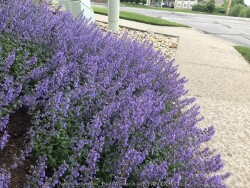

Nepeta (Catmint) Is one of the most adaptable, permanent perennials available in our climate and in your landscape! Definitely a "once it's their plant if there forever". Originally native to the Caucasus, Iran, Iraq, Turkey, there are numerous cultivars now with improved flowering and growth habit. Generally, the mint green foliage is fine textured and compact. Spring emergence in Kansas zone 6a is very early (usually in March) and will tolerate late freezes. This creates very early season interest in the garden while other plants are still dormant. Usually within a month of emerging, lavender-blue flowers cover the plant for up to six weeks. Pollinators enjoy the feast especially when catmint is used as a mass planting groundcover. Following spring flowering, many varieties develop attractive foliage and continual sporadic flowering. Some varieties have another big flower show in the fall especially if they are trimmed back and deadheaded once in late summer. Foliage is persistent and remains attractive late into the fall down to about 20° F providing late-season interest. Winter dried foliage is a somewhat attractive light gray and will eventually need to be cut or mowed to the ground before new growth emerges in the spring. Catmint is tolerant of almost any kind of soil including clay but will not tolerate poorly drained soil. Frequent watering is OK in normal garden soils but there is a risk of excessive growth and flopping. Catmint looks best in full sun but will still flower and look decent with part shade or 1/2 day full sun. This makes it adaptable to any side of the house even called northside if it gets full sun by mid-summer when the sun angle gets high. Cold hardiness or heat stress is not a problem at all in zone 6. Combine with just about any other perennial or shrub with a different flower and leaf color. It's hard to imagine a perennial or pollinator garden in Kansas without Catmint! Contrary to popular belief, cats do not destroy or eat this plant but may be attracted to it and create a nest beside it. They are really after catnip, a closely related plant. Nepeta x faassenii 'Blue Wonder' flowers that are a shade closer to blue. It will form low mounds of slightly greener leaves than most catmint. It may self-seed in optimum growing conditions in Kansas.
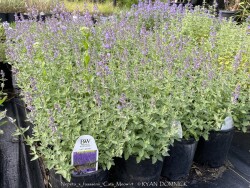

Nepeta (Catmint) Is one of the most adaptable, permanent perennials available in our climate and in your landscape! Definitely a "once it's their plant if there forever". Originally native to the Caucasus, Iran, Iraq, Turkey, there are numerous cultivars now with improved flowering and growth habit. Generally, the mint green foliage is fine textured and compact. Spring emergence in Kansas zone 6a is very early (usually in March) and will tolerate late freezes. This creates very early season interest in the garden while other plants are still dormant. Usually within a month of emerging, lavender-blue flowers cover the plant for up to six weeks. Pollinators enjoy the feast especially when catmint is used as a mass planting groundcover. Following spring flowering, many varieties develop attractive foliage and continual sporadic flowering. Some varieties have another big flower show in the fall especially if they are trimmed back and deadheaded once in late summer. Foliage is persistent and remains attractive late into the fall down to about 20° F providing late-season interest. Winter dried foliage is a somewhat attractive light gray and will eventually need to be cut or mowed to the ground before new growth emerges in the spring. Catmint is tolerant of almost any kind of soil including clay but will not tolerate poorly drained soil. Frequent watering is OK in normal garden soils but there is a risk of excessive growth and flopping. Catmint looks best in full sun but will still flower and look decent with part shade or 1/2 day full sun. This makes it adaptable to any side of the house even called northside if it gets full sun by mid-summer when the sun angle gets high. Cold hardiness or heat stress is not a problem at all in zone 6. Combine with just about any other perennial or shrub with a different flower and leaf color. It's hard to imagine a perennial or pollinator garden in Kansas without Catmint! Contrary to popular belief, cats do not destroy or eat this plant but may be attracted to it and create a nest beside it. They are really after catnip, a closely related plant. Nepeta x faassenii 'Cats Meow' in a new variety from Proven Winners® No catmint is a more beautiful, uniform grower than 'Cat's Meow' Nepeta. Its flowers are dense and colorful, and its habit is more refined. Plus, it stands strong with no flopping, getting wider and growing to a broad mound as the season progresses. All Proven Winners® plants are legally propagated, healthy and vigorous, true to name, and tagged with color pictures and growing information.
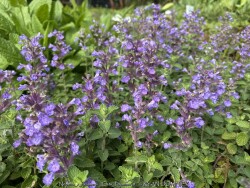

Nepeta (Catmint) Is one of the most adaptable, permanent perennials available in our climate and in your landscape! Definitely a "once it's their plant if there forever". Originally native to the Caucasus, Iran, Iraq, Turkey, there are numerous cultivars now with improved flowering and growth habit. Generally, the mint green foliage is fine textured and compact. Spring emergence in Kansas zone 6a is very early (usually in March) and will tolerate late freezes. This creates very early season interest in the garden while other plants are still dormant. Usually within a month of emerging, lavender-blue flowers cover the plant for up to six weeks. Pollinators enjoy the feast especially when catmint is used as a mass planting groundcover. Following spring flowering, many varieties develop attractive foliage and continual sporadic flowering. Some varieties have another big flower show in the fall especially if they are trimmed back and deadheaded once in late summer. Foliage is persistent and remains attractive late into the fall down to about 20° F providing late-season interest. Winter dried foliage is a somewhat attractive light gray and will eventually need to be cut or mowed to the ground before new growth emerges in the spring. Catmint is tolerant of almost any kind of soil including clay but will not tolerate poorly drained soil. Frequent watering is OK in normal garden soils but there is a risk of excessive growth and flopping. Catmint looks best in full sun but will still flower and look decent with part shade or 1/2 day full sun. This makes it adaptable to any side of the house even called northside if it gets full sun by mid-summer when the sun angle gets high. Cold hardiness or heat stress is not a problem at all in zone 6. Combine with just about any other perennial or shrub with a different flower and leaf color. It's hard to imagine a perennial or pollinator garden in Kansas without Catmint! Contrary to popular belief, cats do not destroy or eat this plant but may be attracted to it and create a nest beside it. They are really after catnip, a closely related plant. Nepeta x faassenii 'Cats Pajamas' in a new variety from Proven Winners® Unlike older varieties that only produce flowers at the top of the stems, this improved Catmint has blooms from the soil to the tips of the stems. Even when the flowers are past peak, the color of the rosy purple calyxes give your garden an additional splash of color. Compared to "Cats Meow", its flowers are the same but overall plant height is about 1/2-2/3rds. Plus, it stands strong with no flopping, getting wider and growing to a broad mound as the season progresses. All Proven Winners® plants are legally propagated, healthy and vigorous, true to name, and tagged with color pictures and growing information. PERENNIAL OF THE YEAR in 2021!
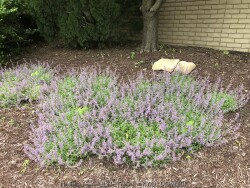

Nepeta (Catmint) Is one of the most adaptable, permanent perennials available in our climate and in your landscape! Definitely a "once it's their plant if there forever". Originally native to the Caucasus, Iran, Iraq, Turkey, there are numerous cultivars now with improved flowering and growth habit. Generally, the mint green foliage is fine textured and compact. Spring emergence in Kansas zone 6a is very early (usually in March) and will tolerate late freezes. This creates very early season interest in the garden while other plants are still dormant. Usually within a month of emerging, lavender-blue flowers cover the plant for up to six weeks. Pollinators enjoy the feast especially when catmint is used as a mass planting groundcover. Following spring flowering, many varieties develop attractive foliage and continual sporadic flowering. Some varieties have another big flower show in the fall especially if they are trimmed back and deadheaded once in late summer. Foliage is persistent and remains attractive late into the fall down to about 20° F providing late-season interest. Winter dried foliage is a somewhat attractive light gray and will eventually need to be cut or mowed to the ground before new growth emerges in the spring. Catmint is tolerant of almost any kind of soil including clay but will not tolerate poorly drained soil. Frequent watering is OK in normal garden soils but there is a risk of excessive growth and flopping. Catmint looks best in full sun but will still flower and look decent with part shade or 1/2 day full sun. This makes it adaptable to any side of the house even called northside if it gets full sun by mid-summer when the sun angle gets high. Cold hardiness or heat stress is not a problem at all in zone 6. Combine with just about any other perennial or shrub with a different flower and leaf color. It's hard to imagine a perennial or pollinator garden in Kansas without Catmint! Contrary to popular belief, cats do not destroy or eat this plant but may be attracted to it and create a nest beside it. They are really after catnip, a closely related plant. Nepeta x faassenii 'Little Trudy' is a compact, long-blooming catmint only 8-10" tall.
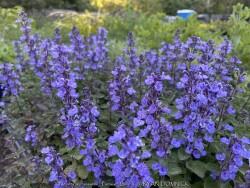

Nepeta (Catmint) Is one of the most adaptable, permanent perennials available in our climate and in your landscape! Definitely a "once it's their plant if there forever". Originally native to the Caucasus, Iran, Iraq, Turkey, there are numerous cultivars now with improved flowering and growth habit. Generally, the mint green foliage is fine textured and compact. Spring emergence in Kansas zone 6a is very early (usually in March) and will tolerate late freezes. This creates very early season interest in the garden while other plants are still dormant. Usually within a month of emerging, lavender-blue flowers cover the plant for up to six weeks. Pollinators enjoy the feast especially when catmint is used as a mass planting groundcover. Following spring flowering, many varieties develop attractive foliage and continual sporadic flowering. Some varieties have another big flower show in the fall especially if they are trimmed back and deadheaded once in late summer. Foliage is persistent and remains attractive late into the fall down to about 20° F providing late-season interest. Winter dried foliage is a somewhat attractive light gray and will eventually need to be cut or mowed to the ground before new growth emerges in the spring. Catmint is tolerant of almost any kind of soil including clay but will not tolerate poorly drained soil. Frequent watering is OK in normal garden soils but there is a risk of excessive growth and flopping. Catmint looks best in full sun but will still flower and look decent with part shade or 1/2 day full sun. This makes it adaptable to any side of the house even called northside if it gets full sun by mid-summer when the sun angle gets high. Cold hardiness or heat stress is not a problem at all in zone 6. Combine with just about any other perennial or shrub with a different flower and leaf color. It's hard to imagine a perennial or pollinator garden in Kansas without Catmint! Contrary to popular belief, cats do not destroy or eat this plant but may be attracted to it and create a nest beside it. They are really after catnip, a closely related plant. Nepeta faassenii 'Purrsian Blue' was introduced by Walter's Garden, Inc. This selection has an improved tidy habit, though it is a bit smaller and more compact in size overall than others. This is a very floriferous selection whose flower power is amplified by its having its flowers spaced closely together on the stems. Periwinkle blue flowers are coddled by dark purple calyxes just above the aromatic foliage from early summer into early fall.
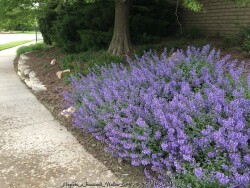

Nepeta (Catmint) Is one of the most adaptable, permanent perennials available in our climate and in your landscape! Definitely a "once it's their plant if there forever". Originally native to the Caucasus, Iran, Iraq, Turkey, there are numerous cultivars now with improved flowering and growth habit. Generally, the mint green foliage is fine textured and compact. Spring emergence in Kansas zone 6a is very early (usually in March) and will tolerate late freezes. This creates very early season interest in the garden while other plants are still dormant. Usually within a month of emerging, lavender-blue flowers cover the plant for up to six weeks. Pollinators enjoy the feast especially when catmint is used as a mass planting groundcover. Following spring flowering, many varieties develop attractive foliage and continual sporadic flowering. Some varieties have another big flower show in the fall especially if they are trimmed back and deadheaded once in late summer. Foliage is persistent and remains attractive late into the fall down to about 20° F providing late-season interest. Winter dried foliage is a somewhat attractive light gray and will eventually need to be cut or mowed to the ground before new growth emerges in the spring. Catmint is tolerant of almost any kind of soil including clay but will not tolerate poorly drained soil. Frequent watering is OK in normal garden soils but there is a risk of excessive growth and flopping. Catmint looks best in full sun but will still flower and look decent with part shade or 1/2 day full sun. This makes it adaptable to any side of the house even called northside if it gets full sun by mid-summer when the sun angle gets high. Cold hardiness or heat stress is not a problem at all in zone 6. Combine with just about any other perennial or shrub with a different flower and leaf color. It's hard to imagine a perennial or pollinator garden in Kansas without Catmint! Contrary to popular belief, cats do not destroy or eat this plant but may be attracted to it and create a nest beside it. They are really after catnip, a closely related plant. Nepeta x faassenii 'Walker Jr' is a compact, long-blooming catmint only 12-16" tall.
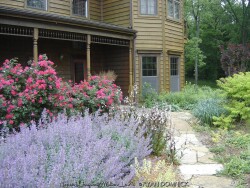

Nepeta (Catmint) Is one of the most adaptable, permanent perennials available in our climate and in your landscape! Definitely a "once it's their plant if there forever". Originally native to the Caucasus, Iran, Iraq, Turkey, there are numerous cultivars now with improved flowering and growth habit. Generally, the mint green foliage is fine textured and compact. Spring emergence in Kansas zone 6a is very early (usually in March) and will tolerate late freezes. This creates very early season interest in the garden while other plants are still dormant. Usually within a month of emerging, lavender-blue flowers cover the plant for up to six weeks. Pollinators enjoy the feast especially when catmint is used as a mass planting groundcover. Following spring flowering, many varieties develop attractive foliage and continual sporadic flowering. Some varieties have another big flower show in the fall especially if they are trimmed back and deadheaded once in late summer. Foliage is persistent and remains attractive late into the fall down to about 20° F providing late-season interest. Winter dried foliage is a somewhat attractive light gray and will eventually need to be cut or mowed to the ground before new growth emerges in the spring. Catmint is tolerant of almost any kind of soil including clay but will not tolerate poorly drained soil. Frequent watering is OK in normal garden soils but there is a risk of excessive growth and flopping. Catmint looks best in full sun but will still flower and look decent with part shade or 1/2 day full sun. This makes it adaptable to any side of the house even called northside if it gets full sun by mid-summer when the sun angle gets high. Cold hardiness or heat stress is not a problem at all in zone 6. Combine with just about any other perennial or shrub with a different flower and leaf color. It's hard to imagine a perennial or pollinator garden in Kansas without Catmint! Contrary to popular belief, cats do not destroy or eat this plant but may be attracted to it and create a nest beside it. They are really after catnip, a closely related plant. Nepeta x faassenii 'Walker's Low' is contradictorily a "tall" mounding plant grows to 2 to 3 feet tall and wide. If you want a very robust death-proof catmint, this is the one. I have also seen this plant effectively covering large sloped areas along roads with no bare spots or dead plants. Excellent when cascading off walls or container edges.


Nepeta (Catmint) Is one of the most adaptable, permanent perennials available in our climate and in your landscape! Definitely a "once it's their plant if there forever". Originally native to the Caucasus, Iran, Iraq, Turkey, there are numerous cultivars now with improved flowering and growth habit. Generally, the mint green foliage is fine textured and compact. Spring emergence in Kansas zone 6a is very early (usually in March) and will tolerate late freezes. This creates very early season interest in the garden while other plants are still dormant. Usually within a month of emerging, lavender-blue flowers cover the plant for up to six weeks. Pollinators enjoy the feast especially when catmint is used as a mass planting groundcover. Following spring flowering, many varieties develop attractive foliage and continual sporadic flowering. Some varieties have another big flower show in the fall especially if they are trimmed back and deadheaded once in late summer. Foliage is persistent and remains attractive late into the fall down to about 20° F providing late-season interest. Winter dried foliage is a somewhat attractive light gray and will eventually need to be cut or mowed to the ground before new growth emerges in the spring. Catmint is tolerant of almost any kind of soil including clay but will not tolerate poorly drained soil. Frequent watering is OK in normal garden soils but there is a risk of excessive growth and flopping. Catmint looks best in full sun but will still flower and look decent with part shade or 1/2 day full sun. This makes it adaptable to any side of the house even called northside if it gets full sun by mid-summer when the sun angle gets high. Cold hardiness or heat stress is not a problem at all in zone 6. Combine with just about any other perennial or shrub with a different flower and leaf color. It's hard to imagine a perennial or pollinator garden in Kansas without Catmint! Contrary to popular belief, cats do not destroy or eat this plant but may be attracted to it and create a nest beside it. They are really after catnip, a closely related plant.
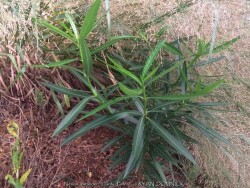

Austin Pretty Limits® Oleander. (Nerium oleander 'Austin Pretty Limits') Enjoy bright pink flowers every day of the year with Austin Pretty Limits oleander. This non-stop bloomer was selected in Austin, Texas, for its dense, rounded habit and exceptional disease resistance. The bright pink flowers make it the ideal choice for hedges, specimens, containers, and more. Oleander is typically grown in warmer zones. Along with other tropicals and succulents in Kansas, oleander is usually grown as summer patio plant. Water regularly and place in full sun. Protect from temperatures below 25 degrees F and move into a bright window, cold garage or basement over the winter with monthly watering. Do not allow the pot with rootball to freeze solid or go below 20 degrees F for more than a few hours. Allow to go dormant as needed with little care, just cut off dead foliage and place back out in April or May with a time-release fertilizer. Many plants will die back slowly inside but still remain attractive inside for most of the winter. You may also plant these in the ground for an enormous tropical effect! It is possible to overwinter these in the ground in Kansas by placing a giant 12-18" mound of mulch over plants and position on the South side of a house. Note: like all oleanders, this plant is toxic if ingested. All Proven Winners® plants are legally propagated, healthy and vigorous, true to name, and tagged with color pictures and growing information.
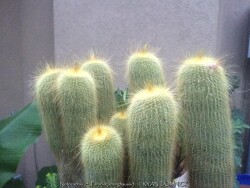

Golden Ball Cacti (Notocactus / Parodia leninghausii) are known for their bright yellow "soft" spines. Native to rocky hills and grasslands in high country Brazil, it's usually grown as a patio or house plant in Kansas. In the wild, established golden ball cacti are hardy to 30 degrees F for short periods of time. Grow in full sun with no extra watering except that which comes from rainfall. Repotting may or may not be needed depending on how large you want the plant to grow; plants can continue to grow taller and tolerate extremely root-bound pots but may need wind bracing. If repotting, make sure to use a sharp draining medium organic cactus mix with plenty of sand and perlite. To play is safe, potted plants are best moved in before night temperatures get below 45 degrees F. It is important to avoid the combination of wet and cold. Before extreme cold occurs, move to a bright interior window over the winter with no watering and keep above freezing. As a winter house plant, it will look presentable all winter long with just no waterings. As a permanent house plant, provide bright light and allow the soil to dry between waterings for many years of carefree enjoyment. Plants grown permanently indoors may begin to elongate stretching for light and lose their spine color. It can be hard to reproduce the intense UV sunlight they need so moving outside for the summer is best. Generally if moving outside for the summer, allow 1-2 weeks of part shade or morning sun before placing in full sun. Plants with time to acclimate will thrive in full sun but be careful not to rush it or sunburning will occur. Potted plants are very low maintenance. I have never seen any insect problems on this plant.
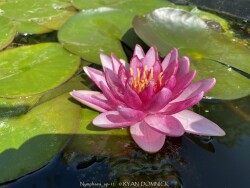

Attraction Red Water Lily, is also known as Nymphaea 'Attraction'


Hollandia Pink Water Lily, is also known as Nymphaea 'Hollandia'


Moon Dance White Water Lily, is also known as Nymphaea 'Moon Dance'
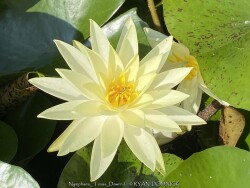

Texas Dawn Yellow Water Lily, is also known as Nymphaea 'Texas Dawn'
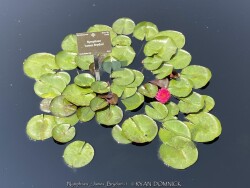

Mixed Water Lily Cultivars, is also known as Nymphaea sp.
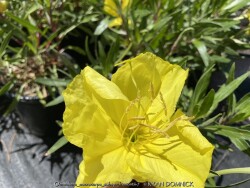

Kansas Native Missouri Primrose, is also known as Oenothera macrocarpa subsp. fremontii
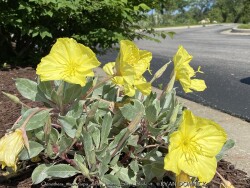

Silver Blade Missouri Primrose, is also known as Oenothera macrocarpa subsp. incana 'Silver Blade'
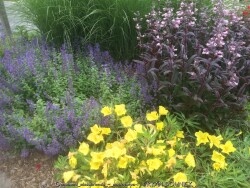

>>>>>Missouri Primrose is a native wildflower with bright lemony yellow flowers occurring mostly in Kansas, Missouri, Oklahoma and Texas. native habitat includes limestone glades and bluffs, rocky prairies, and Great Plains. This wildflower also colonizes readily, will grow under the mover blades and can be found along state highways. Foliage is often a green to silver and also very attractive. Flowering is relatively short at 2 to 4 weeks but interesting green four-winged seed pods develop. These eventually break off and blow away spreading more seed. In the landscape, Missouri Primrose can be used in any dry soil situation including berms, hot south or west side of the house, or any other full sun area. These will grow in poor rocky, sandy or clayish soils and even rich organic soils with slightly increased root rot susceptibility. With our average 40 inches of rain per year in eastern Kansas, extra Irrigation is not recommended. Missouri Primrose can be planted in parking lot medians and other hell strips as a very durable groundcover. Combine with any other flower colors except yellow. There is quite a lot of diversity within the species so plants from different locales will have different foliage adapted to the site.
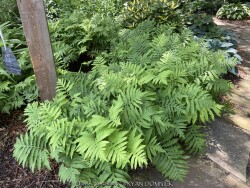

Sensitive Fern (Onoclea sensibilis) is a coarse-textured, medium to light green, deciduous perennial fern. Native to Asia and North America, it forms large colonies in forests growing best in moist shaded or partially shaded areas. It also colonizes wet meadows, thickets and bogs, as well as stream and riverbanks and roadside ditches. It tolerates extremely wet soils, can be aggressive in ideal locations but not so much in Kansas. It can spread rapidly in humusy, medium well-drained soil in part shade to full shade. Perfect in wet shade areas, north walls, areas without tree-root competition, or shaded rain gardens. It cannot handle prolonged Kansas droughts or dry-shade, but can tolerate dryer conditions in shade with good soils. Generally however, in non-irrigated or poor soil areas, this plant will decline and allow weeds to invade. Foliage finally dies back to the ground in early autumn with "fiddle-heads" emerging and unfurling in mid-spring. Generally this plant holds its own in Kansas climates but fails to spread very quickly. Look for a cold microclimate planting location such as East or North exposure. I have seen an established planting thriving on the north side of a customer's house for 20 plus years in zone 6a, Lawrence, KS.
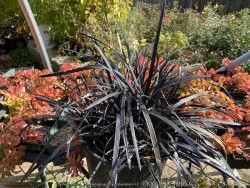

Black Mondo Grass, is also known as Ophiopogon planiscapus 'Arabicus'
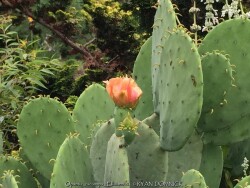

This prickly pear (Opuntia cacanapa 'Ellisiana') is truly spineless! Yes, completely spineless and free of glochids. The smooth green paddles and upright growth habit create a unique addition to the desert garden. The pads are sparsely spined, light green, and hardy to about 0 degrees F. This cactus has a place as one of the few upright cacti that can handle extreme cold. Ellisiana Spineless Prickly Pear is most often used as a patio plant in Kansas. Place in full sun with no extra watering except from rainfall. Repotting may or may not be needed depending on how large you want the plant to grow. Potted plants are hardy to at least 10 degrees F if kept dry so you can wait awhile to move these in for the winter. Then move into a cold garage, basement, or window over the winter with NO watering. Although un-tested by the author, this opuntia could survive in a microclimate under a south facing roof overhang kept completely dry in the winter and controlled water in the summer in zone 6a. Several plantings in Tulsa, Oklahoma at the Gathering Place endured temperatures as low as -11 degrees F along with prolonged cold (5 days of highs in the teens and lows in the single digits) in February, 2021. This interesting and "completely safe" cactus, when special ordered in quantity, can be used as an annual mass planting in the landscape. If grown as a patio or house plant, move to a bright interior window over the winter before extreme cold occurs with no watering and keep above freezing. If grown as a summer patio plant, move to a bright interior window over the winter before extreme cold occurs with no watering and keep above freezing. As a winter-only house plant, it will look presentable all winter long with just no waterings. As a permanent house plant, provide bright light and allow the soil to dry between waterings for many years of carefree enjoyment. Pads are easy to propagate.
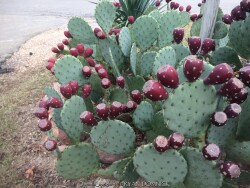

The yellow flowers, maroon long lasting fruits, and upright growth habit of this cactus (Opuntia engelmannii var. lindheimeri) create a unique addition to the desert garden. The pads are sparsely spined, light green, and hardy to about -5 degrees F. Native to arid soils in Texas and Oklahoma, this cactus has a place as one of the few upright cacti that can handle extreme cold. In fact, I have seen this species growing a in Lawrence, KS in desert gardens along a south wall of a house. With well drained soils and proper micro-climate, this cactus can handle our extreme cold and excess rainfall of Eastern Kansas.
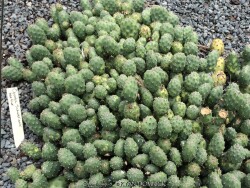

These tiny perennial succulent cacti (Opuntia fragilis 'Potato') produce globe-shaped, spherical stems make this selection unique. 'Potato' prickly pear is virtually spineless. It is native to mountainous areas in Western Colorado. The olive green "pads" take on a lovely winter blush of purple in cold weather. Grow this small native gem in a Kansas rock garden, in cracks between rocks, or on top of or in a retaining wall. You may also grow in flat areas like in between stepping stones provided you used a gravelly or sandy base for the stones. It will not tolerate rich moist soils as other plants or weeds will shade it out. Root rot can occur during lengthy hot humid summer rainy periods. If grown as a summer patio plant, move to a bright interior window over the winter before extreme cold occurs with no watering and keep above freezing. As a winter-only house plant, it will look presentable all winter long with just no waterings. Upon moving outside the following spring, plants with plenty of time to acclimate will thrive in full sun but be careful not to rush it or sunburning will occur. Generally if moving outside for the summer, allow 2-3 weeks of part shade or morning sun before placing in full sun. If grown in pots permanently outdoors, keep on the dry side in minerally sandy soil. You may leave out all winter allowing to freeze solid (Hardy to zone 4a); plants will go dormant and resume growth in the spring. As a permanent house plant, provide bright light and allow the soil to dry between waterings for many years of carefree enjoyment. Little potato-like pads are easy to propagate. Our original plant came from Plant Delights Nursery in North Carolina and also available on their mail-order website.
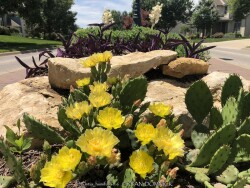

Eastern Prickly Pear Cacti (Opuntia humifusa) have attractive green pads, brilliant yellow flowers in June, and pinkish maroon edible fruits afterward that last into winter. They are native to eastern woods of Kansas, Missouri, Oklahoma, Texas, Arkansas and much of the Southeast United States. This cold hardy succulent occupies an unusual niche: growing in poor shallow sandstone based soils in open woods and on sunny rock cliffs that dry out too quickly for most other plants to colonize. Pads are sometimes carried off by animals and take root elsewhere. Grow this small native gem in rock gardens, dry shade areas, in parking lot medians, in cracks between rocks, or on top of or in a retaining wall. This species will grow in full sun or full shade! Although not picky about soils, just ensure that drainage is good. If grown in exterior pots and kept on the dry side, you may leave out all winter allowing to freeze solid; plants will go completely dormant and resume growth in the spring. Although these prickly pear do not have spines, they do have glochids. (painful bristles that come off and irritate the skin for a few days) Great low maintenance cold hardy and very versatile succulent.


Plains Prickly Pear Cacti (Opuntia macrorhiza) have attractive green pads, brilliant yellow flowers in June, and pinkish maroon edible fruits afterward that last into winter. They are native to much of the Great Plains from Texas to Minnesota. Pads are sometimes carried off by animals and take root elsewhere. Grow this small native gem in rock gardens, dry shade areas, in parking lot medians, in cracks between rocks, or on top of or in a retaining wall. Although not picky about soils, just ensure that drainage is good. If grown in exterior pots and kept on the dry side, you may leave out all winter allowing to freeze solid; plants will go completely dormant and resume growth in the spring. Although these prickly pear have spines and glochids. (painful bristles that come off and irritate the skin for a few days) so be careful around children and pets. Great low maintenance cold hardy and very versatile plant!
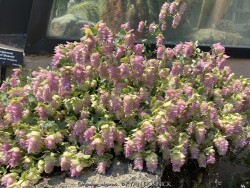

***Description for this perennial available with future update!***
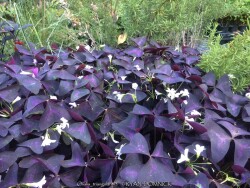

Oxalis triangularis is also commonly called Purple False Shamrock. It is a species of perennial plant native to several countries in southern South America. Grown mostly for its bright purple shamrock-like leaves and occasional pink flowers, the leaves also move in response to light levels, opening in high ambient light (in the day) and closing at low light levels (at night) In Kansas gardens it is normally grown in containers as an annual, patio plant or house plant. If grown in well drained soil planted in the ground in the right micro-climate (South-facing exposure), it may be a perennial. If low temperatures hit -10 degrees F, it may kill an un-mulched plant; protect any zone 6 perennial with thick layer of mulch. In our trial gardens in Lawrence, KS (zone 6a), three established specimens planted 3-4" deep and mulched 4-6" with leaf mulch survived -17 degrees F. During the arctic blast of February, 2021, lows down to -17 degrees F on Feb 16th, 2021 were recorded. The longevity of this cold blast was also impressive: 10 days on a row with highs of 10-15 degrees F or lower, 8 nights of lows in the single digits and negatives, and 36 straight hours of 0 degrees F and mostly lower. More testing would be good to evaluate true cold-tolerance.
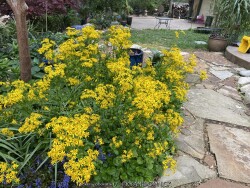

Native Roundleaf Groundsel / Packera, is also known as Packera obovata
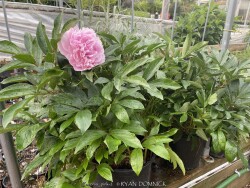

Peonies (Paeonia), along with roses are one of the most universally well-known flowers. The toughness and durability of this plant can be seen in cemeteries or around abandoned houses, surviving decades even 100 years or more without care. Peonies are native to China in cold continental climate areas but also do well in Kansas. Large flowers come in different shades of white, red, and pink. Peonies bloom usually around Memorial Day hence their popularity and cemeteries. Blooming lasts about 2 weeks but can be short-lived if a thunderstorm happens during the last week of blooming when petals are fully open. In zone 6 and south, the foliage is glossy green and attractive throughout the first half of summer. Usually, by late summer, foliage is tattered from drought stress and diseases. This has no ill effect on the health of the plant as it is already set its growth buds for next year. In northern areas (USDA zones 3-5), Peony foliage lasts all summer and turns a brilliant red and orange color in the fall. Due to its need for cold winters, peonies will not grow well further south than zone 8b. Gardeners in south Florida have had success getting peonies to bloom by dumping a bag of ice on the dormant plant every day for 5-6 weeks in winter: sounds like a lot of work huh! Due to its cold tolerance, peonies may be grown in above-ground pots or raised planters year-round. When planting outside, be careful to plant at the correct depth with pink buds slightly below the soil or plants will not bloom. Overall, peonies are a very reliable long-lived plant in Kansas surviving everything. But they do require some maintenance to look their best. Ultra cold-hardy plants from northern climates normally dislike our long hot humid summers; although we are on the Southern edge of this plant's adaptability, it still survives reasonably well here. Look for a cold microclimate planting location such as East or North exposure.
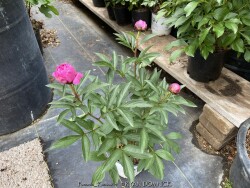

Peonies (Paeonia), along with roses are one of the most universally well-known flowers. The toughness and durability of this plant can be seen in cemeteries or around abandoned houses, surviving decades even 100 years or more without care. Peonies are native to China in cold continental climate areas but also do well in Kansas. Large flowers come in different shades of white, red, and pink. Peonies bloom usually around Memorial Day hence their popularity and cemeteries. Blooming lasts about 2 weeks but can be short-lived if a thunderstorm happens during the last week of blooming when petals are fully open. In zone 6 and south, the foliage is glossy green and attractive throughout the first half of summer. Usually, by late summer, foliage is tattered from drought stress and diseases. This has no ill effect on the health of the plant as it is already set its growth buds for next year. In northern areas (USDA zones 3-5), Peony foliage lasts all summer and turns a brilliant red and orange color in the fall. Due to its need for cold winters, peonies will not grow well further south than zone 8b. Gardeners in south Florida have had success getting peonies to bloom by dumping a bag of ice on the dormant plant every day for 5-6 weeks in winter: sounds like a lot of work huh! Due to its cold tolerance, peonies may be grown in above-ground pots or raised planters year-round. When planting outside, be careful to plant at the correct depth with pink buds slightly below the soil or plants will not bloom. Overall, peonies are a very reliable long-lived plant in Kansas surviving everything. But they do require some maintenance to look their best. Ultra cold-hardy plants from northern climates normally dislike our long hot humid summers; although we are on the Southern edge of this plant's adaptability, it still survives reasonably well here. Look for a cold microclimate planting location such as East or North exposure. Paeonia lactiflora 'Kansas' features double flowering magenta-carmine-red blooms are displayed on the bold, erect stems.
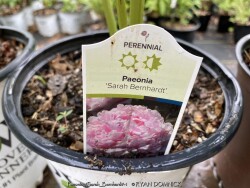

Peonies (Paeonia), along with roses are one of the most universally well-known flowers. The toughness and durability of this plant can be seen in cemeteries or around abandoned houses, surviving decades even 100 years or more without care. Peonies are native to China in cold continental climate areas but also do well in Kansas. Large flowers come in different shades of white, red, and pink. Peonies bloom usually around Memorial Day hence their popularity and cemeteries. Blooming lasts about 2 weeks but can be short-lived if a thunderstorm happens during the last week of blooming when petals are fully open. In zone 6 and south, the foliage is glossy green and attractive throughout the first half of summer. Usually, by late summer, foliage is tattered from drought stress and diseases. This has no ill effect on the health of the plant as it is already set its growth buds for next year. In northern areas (USDA zones 3-5), Peony foliage lasts all summer and turns a brilliant red and orange color in the fall. Due to its need for cold winters, peonies will not grow well further south than zone 8b. Gardeners in south Florida have had success getting peonies to bloom by dumping a bag of ice on the dormant plant every day for 5-6 weeks in winter: sounds like a lot of work huh! Due to its cold tolerance, peonies may be grown in above-ground pots or raised planters year-round. When planting outside, be careful to plant at the correct depth with pink buds slightly below the soil or plants will not bloom. Overall, peonies are a very reliable long-lived plant in Kansas surviving everything. But they do require some maintenance to look their best. Ultra cold-hardy plants from northern climates normally dislike our long hot humid summers; although we are on the Southern edge of this plant's adaptability, it still survives reasonably well here. Look for a cold microclimate planting location such as East or North exposure. Paeonia lactiflora 'Sarah Bernhardt' features enormous, fragrant, double flowers in rose pink with white edges.
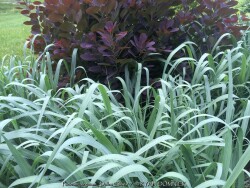

Dallas Blues Switch Grass, is also known as Panicum virgatum 'Dallas Blues'
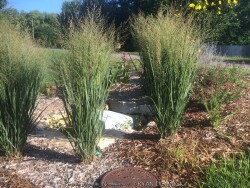

Northwinds Switch Grass, is also known as Panicum virgatum 'Northwinds'
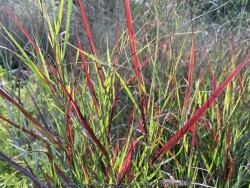

>>>>>Forms a dense, upright clump of blue-green leaves that turn wine red in early summer. Purple flower panicles appear just above the foliage in late summer. This petite red grass is ideal for containers.>>>>>>All Proven Winners® plants are legally propagated, healthy and vigorous, true to name, and tagged with color pictures and growing information.
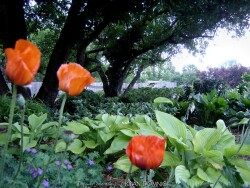

>>>>>Ultra cold-hardy plants from northern climates normally dislike our long hot humid summers; although we are on the Southern edge of this plants adaptability, it still survives reasonably well here. Look for a cold microclimate planting location such as East or North exposure.>>>>>
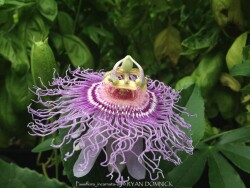

Hardy Purple Passionflower (Passiflora incarnata) is also called Maypop and is native to the eastern United States including Kansas. The plant features dark green tri-lobed leaves and tropical-looking purple and white flowers. The petals and sepals include a fringe of wavy or crimped hair-like segments with very pronounced pistils and stamens. Flowers bloom in summer and are fragrant. Fleshy, egg-shaped, edible fruits called maypops appear in July-August and mature to a yellowish color in fall. Ripened maypops can be eaten fresh off the vine or made into jelly. Maypop name refers to the loud popping sound made when fruits are stepped on. It's one of those "if you don't eat it, step on it plants"! Easily grown in a wide variety of soils including heavy clay. It is usually grown on structures that it can be easily removed from each year as it dies to the ground. We have it growing in our Lawrence, KS display garden mixed with a large patch of giant reed grass (Arundo donax) that all gets cut down each year. It weaves beautifully throughout the canes and allows for easy to harvest the fruits. Funny thing is, we did not plant it: it just showed up on its own. No other plants exist within several hundred feet! Beware that this is an extremely vigorous plant that crowds out most weeds and is itself weed-like, with a very spreading growth habit mainly from root suckers coming up freely. Best planted in wild areas where it can mix with other plants; mowing around it generally stops the yearly spread in lawn areas. Spot spraying errant shoots is also effective. "Once it's there, it's there forever" plant!


***Description for this perennial available with future update!***
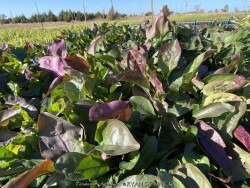

Foxglove Beardtongue / Native Penstemon, is also known as Penstemon digitalis. >>>>>
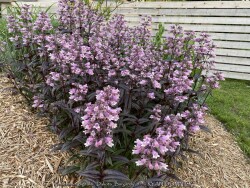

Dakota Burgundy Penstemon, is also known as Penstemon digitalis 'Dakota Burgundy'
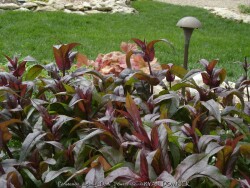

Dark Towers Penstemon, is also known as Penstemon digitalis 'Dark Towers'